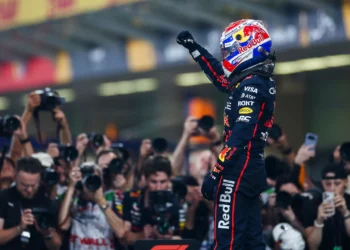As NASCAR gears up for a new era with the rumored Gen-8 car and potential electric series, rival Roger Penske is already surging ahead with a groundbreaking IndyCar chassis. Is NASCAR losing its edge in the race for motorsport innovation?
Gen-7: NASCAR’s Biggest Gamble or Its Greatest Flop?
When NASCAR rolled out the Next-Gen car in 2021, it was hailed as the sport’s most significant transformation in over 50 years. Toyota President David Wilson declared it a game-changer, promising greater parity and cutting-edge technology. However, three years later, that vision has fallen short.
Criticism of the Gen-7 car has grown louder, with drivers, teams, and fans expressing dissatisfaction over its limitations. From its short-track aero issues—which have turned once-thrilling tracks into snooze-fests—to its rigid single-spec design from Dallara, the Gen-7 has failed to reignite fan engagement. Even Dale Earnhardt Jr., a short-track legend, has admitted the car has dampened his desire to return to racing.
NASCAR’s Chief Operating Officer Steve O’Donnell has acknowledged the backlash, stating, “We’re working on everything,” fueling speculation about the upcoming Gen-8 car. Yet, as NASCAR struggles to address its shortcomings, Roger Penske is forging ahead with bold innovations in the IndyCar Series.
Penske’s IndyCar Revolution: A Vision in Motion
While NASCAR is mired in criticism, Roger Penske is laying the groundwork for the next IndyCar chassis, set to debut in 2027. Penske Entertainment has taken a proactive approach, bypassing virtual renderings and focusing on real-world wind tunnel testing with a scale model of the new car.
Unlike NASCAR’s restrictive development processes, Penske and his team are leveraging partnerships with top manufacturers like Honda, Chevrolet, Ilmor, and Dallara to refine aerodynamics and powertrain concepts in real-world conditions.
Mark Miles, President and CEO of Penske Entertainment, highlighted the significance of this hands-on approach:
“We’re hard at work with Honda, Chevy, Ilmor, and Dallara to think about what’s possible. I think it’ll be exciting for our fan base, coming with relevant technology and styling enhancements we think can score a lot of points with fans.”
This forward-thinking strategy could position IndyCar as the leader in motorsport innovation, potentially luring even NASCAR fans to the open-wheel series.
NASCAR’s Restrictions: Progress or Pitfall?
In stark contrast to Penske’s proactive development, NASCAR has implemented strict limitations on its teams, stifling innovation:
- Chassis Restrictions: Teams can only use 12 active chassis per season, with 4 alternates—a far cry from the unlimited options they once had.
- Practice Cuts: NASCAR reduced practice time to two 15-minute sessions before Cup races, leaving little room for experimentation.
- Wind Tunnel Testing Caps: Teams are limited to just 70 hours of wind tunnel testing, with penalties for exceeding the limit, as seen with Hendrick Motorsports in 2020.
These measures, while aimed at cost-cutting and parity, may hinder NASCAR’s ability to stay competitive in the rapidly evolving motorsport landscape.
A Tale of Two Approaches
NASCAR’s rigid development model contrasts sharply with Penske’s open approach. While NASCAR emphasizes cost controls and parity, Penske focuses on innovation and fan engagement.
By 2027, the IndyCar Series will unveil its next-generation chassis, incorporating advanced powertrains and aerodynamic designs. Meanwhile, NASCAR is rumored to introduce the Gen-8 car, but details remain vague, leaving fans skeptical about whether it can truly address the Gen-7’s shortcomings.
Fan Backlash: NASCAR’s Growing Problem
As NASCAR struggles to balance tradition and innovation, fans have grown increasingly frustrated. Many blame the Gen-7 car for producing lackluster racing, particularly on short tracks—once the heart of the sport. Roger Penske’s bold moves only exacerbate this dissatisfaction, offering a glimpse of what NASCAR could achieve with fewer restrictions.
In contrast, IndyCar’s real-world testing of its 2027 model, alongside its strong manufacturer partnerships, has created a sense of excitement and optimism that NASCAR is struggling to match.
What’s Next for NASCAR?
NASCAR’s COO Steve O’Donnell has hinted at a significant overhaul with the Gen-8 car, but can it come soon enough to keep pace with Penske’s ambitious plans? As IndyCar gains ground with cutting-edge developments, NASCAR risks losing its position as the premier motorsport series in America.
Will NASCAR adapt and reclaim its dominance, or will it fall further behind as Penske’s IndyCar revolution captures the hearts of fans?










